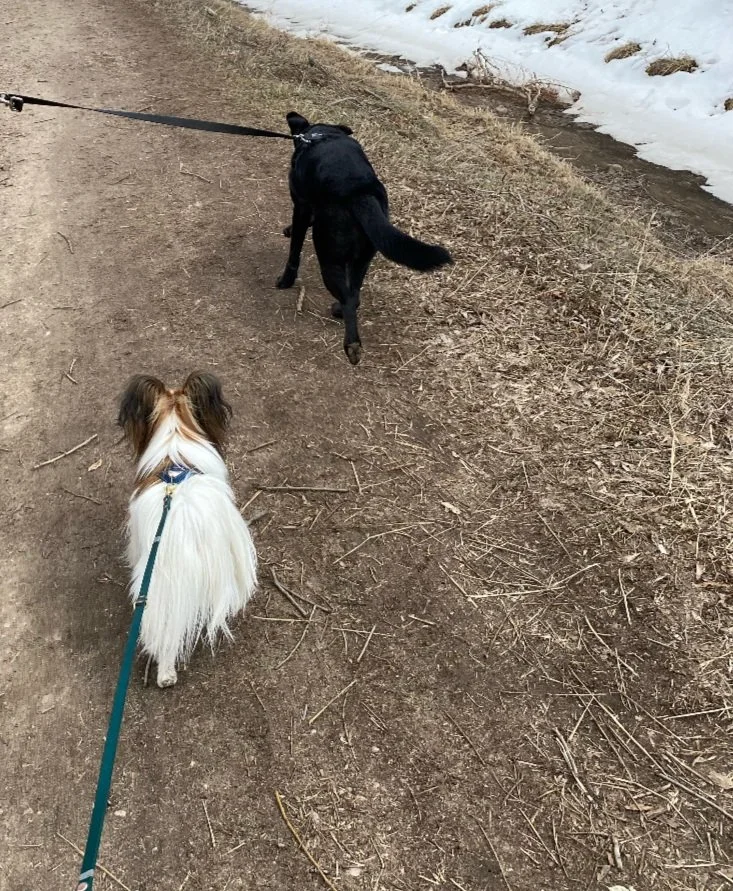Forget the Checklist: Setting Realistic Dog Training Goals for the New Year
By: Hannah Barnes
A new year is almost upon us, and with it, the customary wave of resolutions and ambitious checklists. For new dog or puppy parents, this can easily translate into a long list of training goals, socialization plans, and behavior modification strategies. While it's admirable to strive for the best for your fur baby, we understand the pressure to "do it all" can quickly become overwhelming.
At Summit Dog Training®, we really do empathize with the desire to craft the best possible life for your dog. It’s so tempting to envision the picture-perfect scenario we’ve been taught to expect: a perfectly behaved dog who walks on a loose leash, greets guests with enthusiasm but not chaos, and confidently explores the world without disturbance. You might even be dreaming of competing in dog sports or traveling the world together on top of it all!
Though these goals are all very common and achievable, they can also be ambitious. We're here to tell you that there's no single "checklist" that every dog or puppy parent needs to complete. Every dog-human-team is unique, and so should be your goals.
Summit Dog Training in Fort Collins offers positive reinforcement-based training classes to address a wide range of behavioral challenges. Our certified, professional dog trainers will help you achieve measurable results and build a stronger bond with your furry best friend. We'll work with you to set realistic training goals so you can have as many of life’s adventures together as possible. Get started today!
Focus on One Primary Goal
Instead of creating a comprehensive, lengthy, and overwhelming list, consider starting with just one primary goal for you and your dog in the new year. This could be:
Potty training
Loose-leash walking
Feeling secure in a public space
Keeping four paws on the ground when greeting guests
Recall
A unique goal for your unique circumstances: Maybe you want to teach your dog to bring in the newspaper every morning, or ring a bell anytime they need to go outside.
Remember: Long-term goals are a journey, not a race.
Many of the common goals listed above are ongoing and require consistent effort. It’s important (and fun!) to celebrate the small victories and acknowledge the milestones along the way.
For example, if your goal is for your dog to feel secure in public spaces, a significant milestone might be observing them calmly chew on a bully stick while enjoying the sights and sounds of a park. This demonstrates a level of comfort and self-regulation that can be gradually built upon so they can relax in a variety of environments in the future.
Quality Over Quantity: Avoid Training Fatigue
Dogs, like humans, can definitely experience learning fatigue. Though it might seem counterintuitive, overwhelming them with excessive training sessions, socialization, and exposure can actually hinder their long-term progress. Remember that:
Less is often more. Focus on short, high-quality training sessions rather than long, drawn-out ones.
Dogs are latent learners. They need time to rest and process information in order to integrate new skills.
Prioritize rest and relaxation. Ensure your dog has ample opportunities to unwind and decompress between training sessions, socialization opportunities, and other outings.
You Set the Pace
Ultimately, you get to determine the goals and priorities for your dog. This is your journey, and it's unique. Avoid comparing your progress to others. Every dog learns at their own pace, and just like humans, they have different personalities and learning styles. Some dogs may pick up new skills quickly, while others may take more time. Celebrate every small victory and don't let setbacks discourage you. Learning is not linear, and building a strong bond and reliable skill set with your dog takes time and patience.
Advocating for Your Dog
A crucial part of making progress is advocating for your dog's needs (and your own!) so they are ultimately set up for success.
Know your dog well. Understand their individual temperament, energy levels, and any sensitivities they may have. Remember that every dog is an individual. Situations that might have been easy to handle for the dog you had growing up could be really difficult for the one you have now, and that’s ok.
Choose environments that are appropriate for their current skill level. Don't put your dog into overwhelming situations that they can’t yet handle. There is a fine line between a healthy challenge and toxic stress.
Quick tip: The easiest way to gauge your dog’s ability to handle a situation is to see if they can respond to basic, well-known cues. Can they sit when you ask for it? Find a treat when you toss it on the ground? If not, they may not be capable of learning in their current environment.
Respect their limits. If your dog seems stressed or overwhelmed, remove them from the situation and try again at a different time. This gives you good information about their threshold and will save both of you from unnecessary frustration.
There's No Rush
Remember, building a strong and fulfilling relationship with your dog is a journey, not a race. By setting realistic goals, focusing on quality over quantity, and advocating for your dog's needs, you'll create a positive and rewarding training experience for both of you.
Summit Dog Training specializes in positive reinforcement training methods to empower adventures for dogs and their humans. Our certified, professional dog trainers will guide you every step of the way, helping you achieve measurable results and build a strong relationship with your dog. We'll work with you to set realistic training goals that fit your lifestyle. Contact us today!















